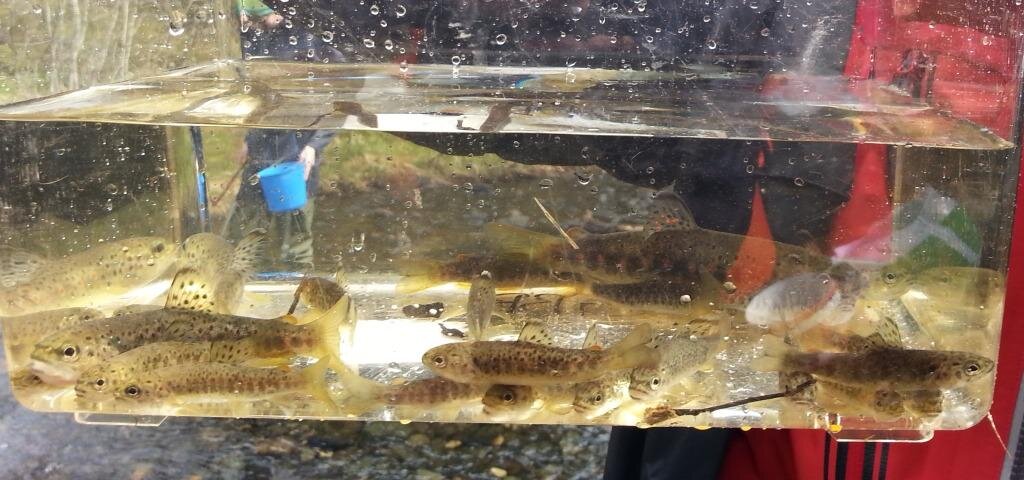Spot the difference between wild salmon and trout fry
Young wild salmon and trout can look very similar at first glance. But there are still some differences. This assignment teaches you what to look for.
Competence goals for 7th grade
- explain how organisms can be divided into main groups and give examples of the characteristics of different organisms.
There should be both baby salmon and baby trout here. It's not easy to tell the difference. Photo: Tone Løvold
Study the fish and find out who is who.
The illustration above shows two baby fish. The top fish has clear finger marks, a few dots on the gill cover and a clear v-shape on the tail. The bottom fish has many spots on both the body and the gill cover. The tail has no clear v-shape.
Young wild salmon and trout may look very similar at first glance. But if you look closely, there are actually quite a few differences. In the illustrations above, the differences are made clear. Study the fish and use the information below to find out which is salmon and which is trout.
Baby salmon have these characteristics:
The adipose fin is often gray-green.
There are eight to twelve distinct stripes on the sides of the fish.
There are one to three dots on the gill covers.
The jawbone is slightly shorter than in trout. It does not go behind the eye.
The pectoral fins are long. They stop approximately where the dorsal fin begins.
When the tail fin is extended, it is V-shaped.
Young trout have these characteristics:
The adipose fin is often orange.
There are often fewer than nine stripes on the sides of the fish.
There are three to five dots on the gill covers.
The jawbone is slightly longer than in salmon. It runs behind the eye.
The pectoral fins are shorter than in salmon. They stop about halfway to where the dorsal fin begins
When the tail fin is extended, it is U-shaped.
Tips:
If you have the opportunity to study live young salmon and trout in a bucket of water, you can easily tell them apart. It is the length of the pectoral fins that reveals who is who. Salmon are built to swim in stronger currents than trout, and therefore have clearly longer pectoral fins.
Did you know that .....
Another word for salmon tongue and trout tongue is parr. When salmon and trout are parr, they have stripes on their sides. The stripes are called either finger marks or parr marks.
The strips provide nice camouflage in water.
For the teacher
The students can work quite independently on this assignment. The pupils read and study the illustrations. Encourage them to use a ruler and measure the fins and jaw. The jawbone is the upper jaw. Students can write down the number of dots, stripes, length of the fish, etc. Discuss the characteristics in class.
The assignment is a good introduction to the life cycle and camouflage. Why do the stripes (finger marks/parr marks) disappear when salmon and sea trout go to the sea?
Why does the fish have a light belly and a dark back? For a bird hunting fish, it is difficult to see the dark back against the dark depths. For a predator coming from the deep, it will be difficult to see the light-colored belly against the bright sky.
The assignment is available in PDF format below.
Student booklet
The National Wild Salmon Center works for stronger wild salmon and wants to promote the stream as an educational resource. Bring experiences from the classroom and put them in context with experiences outside. Many schools in Norway have a nearby stream. Even our largest cities have streams that can be visited. Contact us for assistance, tips and professional refills.
The student booklet "Who lives in your river?" can help with both preparation and follow-up work.




